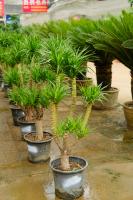What Energy Powers Plants are Turned by Moving Water?
Water is one of the most abundant resources on Earth and has been used to power various systems for centuries. One of the most popular ways to generate energy from water is through hydroelectric power plants. These power plants use moving water to spin turbines, creating electrical energy.
Hydroelectric Power Plant Basics
Hydroelectric power plants work by using the power of moving water to turn turbines that activate generators. The hydraulic system in these plants typically involves a dam or barrage that is used to control the flow of water. Water is stored behind the structure, and when the dam is opened, the water rushes through, spinning the turbines and creating electrical or mechanical energy.
Advantages of Hydroelectric Power Plants
Hydroelectric power has numerous advantages over other forms of energy. First, it is a renewable resource that will never run out, as long as there is water in the source. Also, hydroelectric power produces no greenhouse gases or other harmful pollutants, making it a clean source of energy. Furthermore, hydroelectric plants can be very versatile, with the ability to produce both large-scale and small-scale energy, depending on the size of the plant.
Disadvantages of Hydroelectric Power Plants
Like any type of energy production, hydroelectric power plants also have their drawbacks. One major disadvantage is that they can have significant impacts on ecosystems and the environment. Building a dam or barrage can lead to habitat destruction, displacement of species, and changes in water flow patterns. These negative impacts can be mitigated through proper planning and mitigation measures, but they cannot be eliminated altogether. Additionally, hydroelectric plants require a significant amount of up-front capital to build, making them less accessible to smaller-scale projects.
Hydroelectricity Around the World
Hydroelectric power makes up a significant portion of the world's electricity generation. In 2018, hydroelectricity accounted for 16% of the world's electricity production. The top hydroelectric power producers are China, Brazil, and Canada. In the United States, hydroelectric power accounts for around 7% of all energy generation, with the majority coming from dams located in the Pacific Northwest region of the country. Additionally, many developing countries are investing in hydroelectric power to boost their energy systems and reduce reliance on fossil fuels.
Conclusion
Hydroelectric power plants are a versatile and clean source of energy that has been used for over a century. While there are significant impacts associated with building dams and barrages, proper planning and mitigation measures can help reduce their negative effects. With the world's focus on renewable energy, hydroelectricity will undoubtedly continue to play a vital role in powering our communities.

 how many times do yo...
how many times do yo... how many planted tre...
how many planted tre... how many pine trees ...
how many pine trees ... how many pecan trees...
how many pecan trees... how many plants comp...
how many plants comp... how many plants can ...
how many plants can ... how many plants and ...
how many plants and ... how many pepper plan...
how many pepper plan...






























